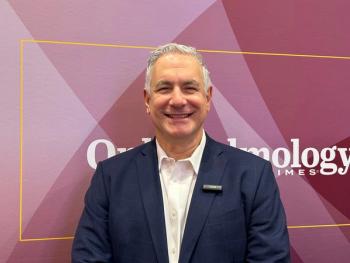
Telemedicine: well-established in ROP
The value of telemedicine is well established, but some limitations in image quality do exist. An objective evaluation of the images overrides the limitations, however. Imaging provides a great opportunity for research. More data on cost effectiveness of various screening modalities are needed in patients with retinopathy of prematurity.
Hong Kong-The value of telemedicine in patients with retinopathy of prematurity (ROP) is well established. The technology provides great opportunities for research, facilitates discussion by experts worldwide, and allows objective evaluation of the pathology, said Birgit Lorenz, MD, at the World Ophthalmology Congress.
"Acute ROP is still a serious disease that is potentially blinding," said Dr. Lorenz, chairwoman and professor of neuro-ophthalmology and pediatric ophthalmology at the Justus-Liebig-University Giessen, Germany.
"In developing countries, there are increasing numbers of babies with ROP; an estimated 40,000 babies go blind from ROP annually," she said. "In Western countries, the disease is a problem especially because the survival rates of very-low-birthweight babies are still increasing.
"The rationale for the use of telemedicine in ROP [is that] there are limited resources for specialist exams," she said. "The technology provides equal chances for all premature babies, and it allows objective evaluation of the pathology, as well as discussion by experts worldwide." The use of telemedicine in ROP began in 2000, Dr. Lorenz said. The latest study being undertaken is the Block ROP study in the United States and Canada, which will evaluate the use of anti-vascular endothelial growth factor drugs in patients with ROP.
Other studies are comparing the specificity and sensitivity of digital imaging with binocular indirect ophthalmoscopy in patients with ROP. The value of such studies, according to Dr. Lorenz, is to evaluate whether the risk of teleconferencing is acceptable.
"We found 82% specificity for detecting referral-warranted ROP and 100% sensitivity to detect any stage of ROP," she said.
In another study, when the sensitivity and specificity of two physicians’ evaluations were compared with ophthalmoscopy and imaging done 4 months later, the agreement was relatively high at 86%. Some discrepancies did not result from missed cases of ROP with digital wide-field imaging but rather from the ophthalmoscopy, considered so far as the gold standard, produced false negatives, she said.
Interobserver variability can be a problem. For example, in a study that included 22 MD specialists in ROP evaluating images of children with ROP, 70% diagnosed plus disease, whereas 30% diagnosed pre-plus disease. The technology also has limitations, such as poor image quality; lack of stereo view; the presence of a dark fundus, which is a challenge and indicates that improvements in the quality of images are desirable; and the fact that imaging nasal zone II and temporal zone III is difficult and additional criteria are needed as aids.
The cost effectiveness of telemedicine has been evaluated.
"A recent study from the United States (Jackson et al., 2008) found that for a baby that requires treatment for ROP, with the assumption that the baby would require an average of five examinations, the cost was $2,807 with telemedicine compared with $4,410 for standard ophthalmoscopy," Dr. Lorenz said.
In this study, however, the cost of the equipment was not included. Legal issues may be another potential consideration. She pointed out, however, with the goal of sparing children from blindness, "telemedicine seems the way to go.
"The value of telemedicine is well established," Dr. Lorenz concluded. "There are some limitations in image quality. However, an objective evaluation of the images overrides the limitations. Imaging provides a great opportunity for research. More data on cost effectiveness are needed."
Newsletter
Don’t miss out—get Ophthalmology Times updates on the latest clinical advancements and expert interviews, straight to your inbox.



















































.png)


